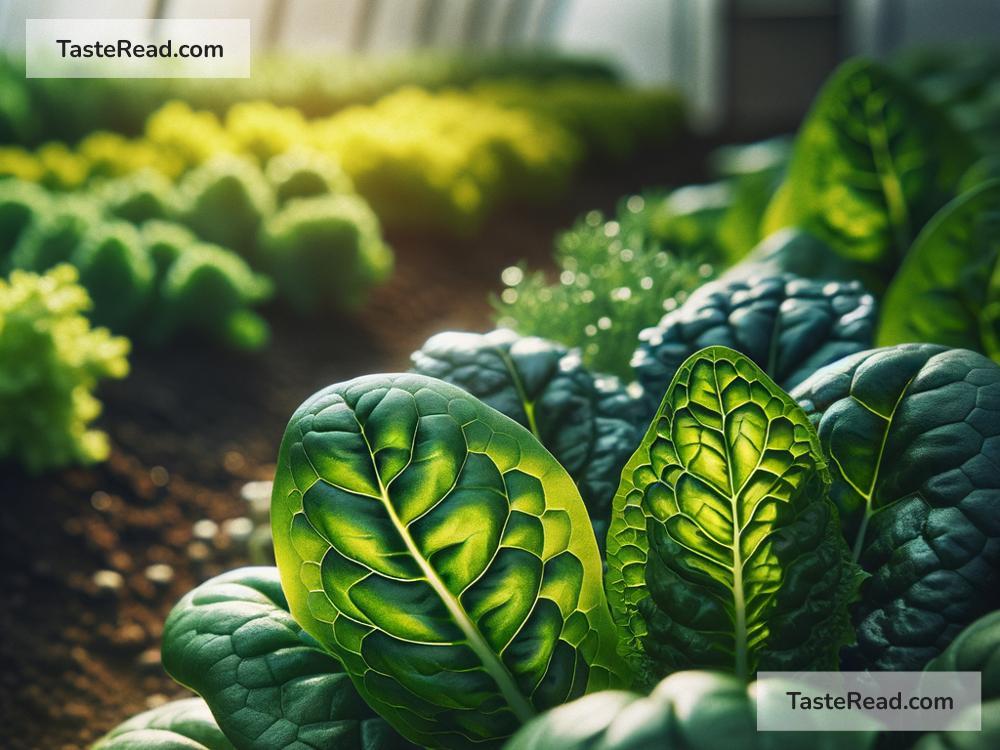How Light Exposure Changes the Flavor of Leafy Greens
Have you ever wondered why some leafy greens taste sweeter, while others have a sharp or bitter flavor? It turns out that light – yes, the very thing that makes plants grow – plays a big role in determining how your veggies taste. Scientists and farmers alike are discovering fascinating ways light influences the flavor of leafy greens like spinach, kale, lettuce, and arugula, and it all begins with how plants use sunlight to grow.
Why Do Plants Need Light?
Plants can’t survive without light. Through a process called photosynthesis, they absorb sunlight and convert it into energy. This energy helps leafy greens grow, repair themselves, and even build nutrients like vitamins and sugars. But light doesn’t just help plants grow big and healthy – it also affects the chemicals inside them. These chemicals are what give greens their distinct tastes, from sweet to bitter to earthy.
Sweet or Bitter? It’s All About Chemistry
The flavor of leafy greens depends on a delicate balance of sugars and plant chemicals called “secondary metabolites.” These metabolites include things like antioxidants and glucosinolates, which are responsible for bitter flavors. Here’s how light exposure tweaks the taste:
-
Sugars: When plants get more light, they produce more energy during photosynthesis. If they’re exposed to just the right amount of light, leafy greens can develop higher levels of sugars. More sugar in the plant means sweeter tasting greens. However, too much light can stress the plant, reducing sugar production and making greens taste dull or harsh.
-
Bitterness: Some chemicals, like glucosinolates, are produced as a defense mechanism. Plants generate these to protect themselves from pests or stress (such as too much light or poor growing conditions). While glucosinolates are healthy for us, they can also make greens bitter or spicy-tasting. For example, kale and arugula produce more bitterness when exposed to excessive light or stress.
-
Antioxidants: Light also influences levels of antioxidants, like vitamin C, which contribute to both flavor and nutritional value. More light often means higher antioxidant levels, which can bring out a plant’s fresh or tangy taste.
Daylight vs. Darkness: Timing Matters
Not all light is created equal. The time of day when greens are exposed to light can also influence their flavor. Research shows that leafy greens accumulate sugars and flavor-enhancing chemicals during daylight. But at night, when there’s no sunlight, plants use up those sugars for their own energy needs. This means that greens harvested in the late afternoon (after a full day of photosynthesis) might taste sweeter than greens picked in the morning.
Interestingly, scientists have discovered that manipulating light cycles in controlled environments, such as greenhouses, can make plants taste better. For example, farmers can adjust the intensity and duration of light exposure to boost flavor or reduce bitterness in crops. Some farms even use LED lights designed to give off specific colors, such as red or blue, which can affect how plants grow and taste.
Seasonal Light Changes
The seasons also impact the flavor of leafy greens. In summer, when days are longer and sunlight is more intense, plants grow quickly and often develop stronger, bitter flavors. In contrast, during the cooler months of fall and winter, when sunlight is less intense and daylight is shorter, leafy greens tend to grow more slowly and taste sweeter. This is why many people prefer “winter greens,” as the lower light conditions can create a milder flavor.
Stress and Shade: Finding the Sweet Spot
Light exposure is not the only factor that influences flavor; stress also plays a big role. Too much light can overstress plants, making them produce bitter chemicals as a survival mechanism. On the other hand, too little light can lead to bland-tasting greens that lack sweetness.
Farmers often solve this problem by creating shade over their crops or planting in areas with partial sunlight. Shade-grown greens tend to have a more tender texture and milder flavor. For example, baby spinach grown under shaded conditions is often sweeter than spinach grown in full, direct sunlight.
What Does This Mean for You?
If you love gardening, understanding the role of light in flavor can help you grow tastier greens. Choose locations in your garden that offer moderate sunlight, or experiment with shading techniques to control bitterness.
As for buying greens at the store, pay attention to what’s in season. Leafy greens harvested in cooler months, or labeled as shade-grown, may taste sweeter and milder. And if you ever visit a farmers’ market, ask vendors about their growing methods – some may use special techniques to enhance taste.
Conclusion
Light is essential for plant growth, but it’s also a key ingredient in determining the flavor of your leafy greens. Too much light can make greens bitter, while the right balance of light and shade can bring out sweeter, milder flavors. By understanding how sunlight impacts plant chemistry, farmers and gardeners can grow tastier greens for your plate. So, the next time you bite into a crunchy spinach or a peppery arugula, remember – the sun had a hand in crafting that flavor!


